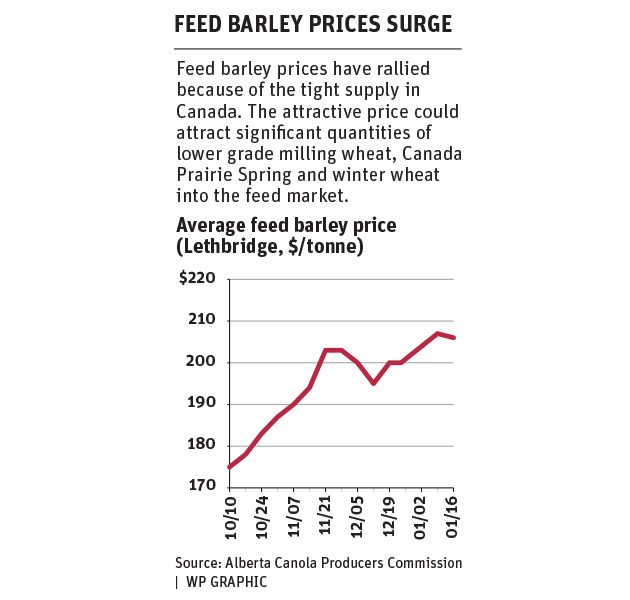Wheat prices can’t fall much lower because of mounting demand from the feed sector, says a market analyst.
Feed mills in Manitoba were recently offering $6 per bushel for low-vomitoxin wheat.
That is above recent bids for Canada Prairie Spring wheat, winter wheat and No. 3 Canada Western Red Spring wheat.
“We’ve got this situation where you can sell milling wheat into feed markets for a premium,” Brenda Tjaden Lepp, chief analyst with FarmLink Marketing Solutions, told CropSphere 2015.
“This could really unleash a lot of supply.”
Read Also

StatCan stands by its model-based crop forecast
Statistics Canada’s model-based production estimates are under scrutiny, but agency says it is confident in the results.
The convergence of feed and mid-grade milling wheat prices should help mop up some of the “comfortable supplies” of the crop, depending on how much low-vomitoxin wheat can be pulled out of the countryside.
However, increased sales of Canadian wheat and U.S. corn into the feed market spells bad news for feed barley prices.
“That is going to put a cap on what has been a very robust feed market this past fall,” said Tjaden Lepp.
Analysts were caught off guard by the run-up in feed barley prices given the massive U.S. corn crop. However, U.S. corn shipments to Canada were delayed by rail problems and the weakening Canadian dollar.
Lower than expected corn imports combined with high levels of vomitoxin in Canadian barley supplies drove up prices for feed barley.
There was also a shortage of malt barley, which caused prices to temporarily surpass $6.50 per bu. Those prices have dropped back to the $5 to $5.50 range as maltsters turn to Europe for supplies.
Tjaden Lepp doesn’t expect those prices to go away soon because of tight carryout and the need to stop the decades-long decline in acres.
“The tight old crop situation is going to keep spot and new crop (barley) prices well supported,” she said in an interview following her presentation.
“There could be some fireworks in that market in the summer for new crop.”
Tjaden Lepp doesn’t know what to tell durum growers after one of the most challenging production and marketing years in recent history.
“Looking ahead to new crop, I’m going to have a really hard time recommending to a grower to commit (to a contract) any amounts of new crop durum production,” she said.
FarmLink had clients last year who forward contracted durum at $8 per bu., but received only $3 to $4 per bu. because of quality penalties, even though the open market was paying $10 to $12 this fall.
Tjaden Lepp thinks durum contracts need new quality discount provisions that better protect growers from that kind of situation.
“At the end of the day, it didn’t work out very well for growers who tried to manage their risk through these forward contracts,” she said.



















